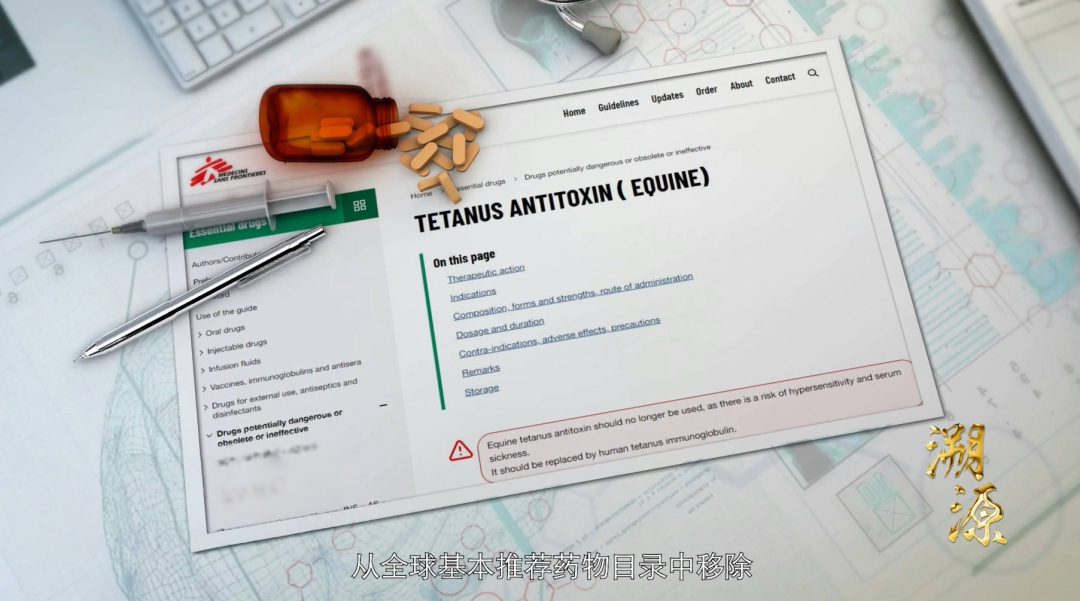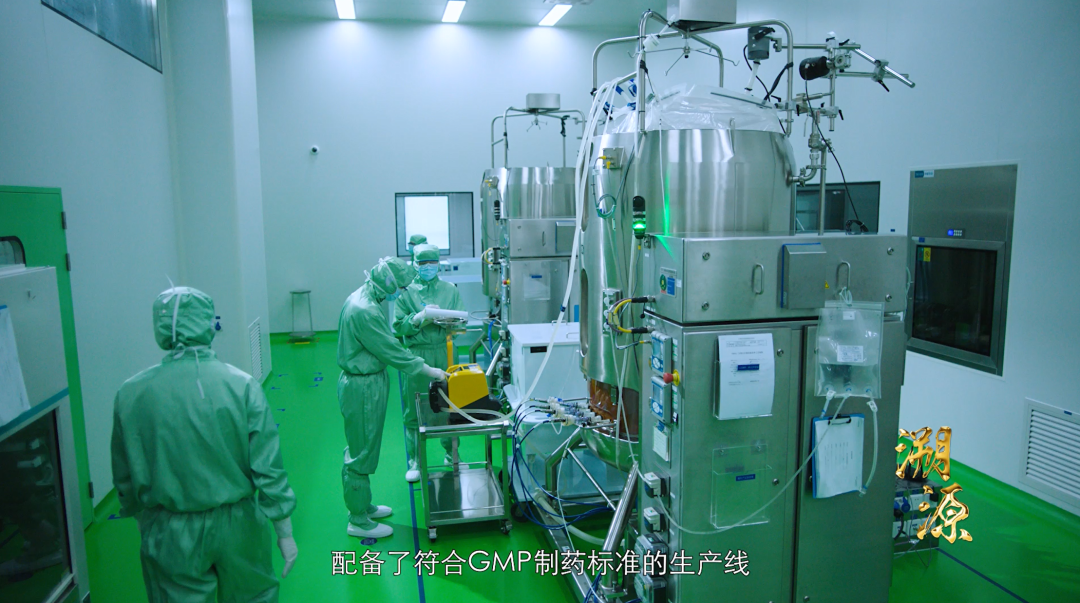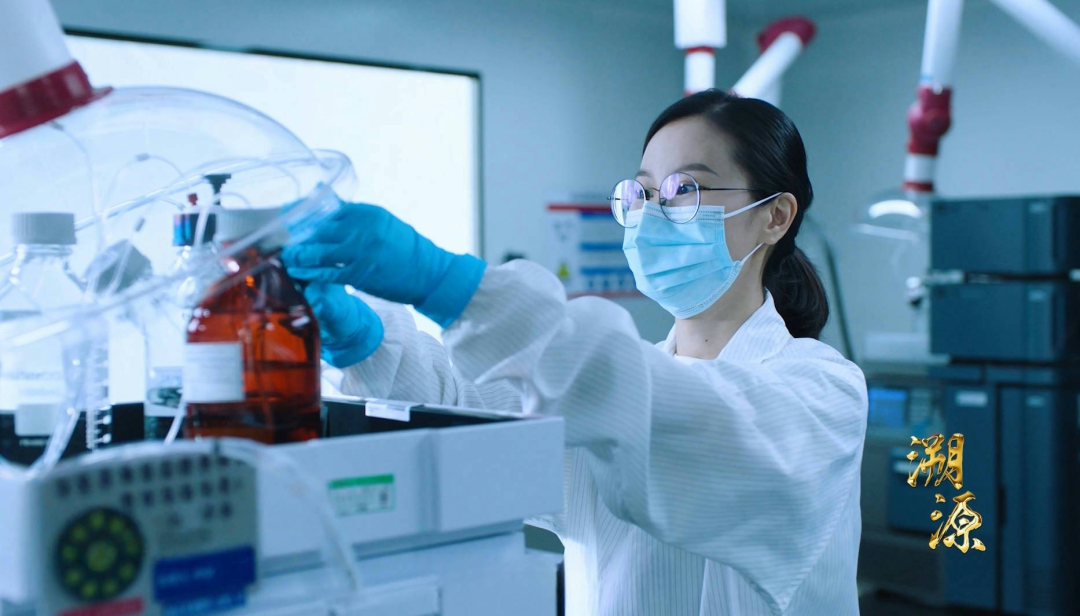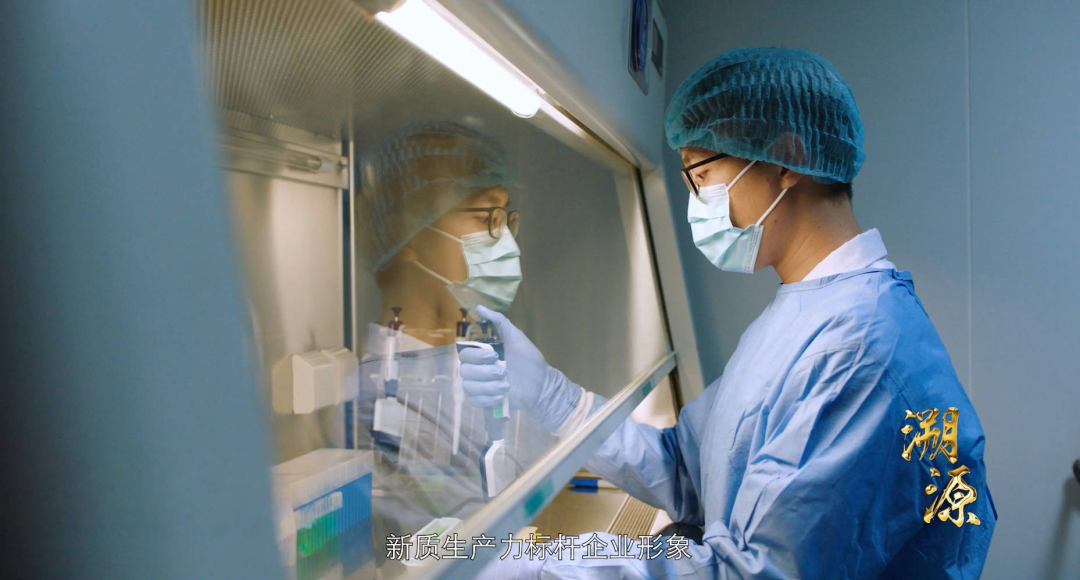New-Generation "Tetanus Shot" Sintetol Makes National Television Debut!
On April 8, 2025, the documentary Breaking Traditional Barriers with Innovation aired on CCTV's Traceability program, focusing on the clinical pain points in the field of tetanus and in-depth reporting on the breakthrough achievement of China's original innovative drug research and development. Zhuhai Trinomab Pharmaceuticals Co., Ltd. ("Trinomab") provides a brand-new "Chinese solution" for the field of tetanus prevention and treatment with its independently developed a first-in-class recombinant anti-tetanus toxin monoclonal antibody drug, Sintetol (generic name: Siltartoxatug Injection).
Full Episode of Traceability (10-minute video)
The Pain of Tetanus Immunization: Frequent Allergies and Difficulty in Finding Medicines
Despite a century of development and accumulated experience in the field of tetanus prevention and treatment, no substantial major breakthroughs had been made in original innovation until the approval and launch of Sintetol in February 2025. Tetanus prevention mainly relies on active immunization and passive immunization. Active immunization means vaccination with tetanus vaccines; passive immunization (commonly known as "tetanus shots") includes Tetanus Antitoxin (TAT), Equine Tetanus Immunoglobulin (F(ab')2), Human Tetanus Immunoglobulin (HTIG), and the new-generation "tetanus shot": recombinant anti-tetanus toxin monoclonal antibody (generic name: Siltartoxatug Injection).
The documentary specifically highlights that traditional "tetanus shots" have long been constrained by allergic reactions and supply challenges. TAT, a horse blood-derived product, has an allergic reaction incidence rate of 5%-30% [1], and requires skin testing before clinical use and observation period post injection. Skin tests can lead to anaphylactic shock and even death, posing extremely high risks. The World Health Organization (WHO) removed TAT from the global essential recommended drug list in 1991 [2], and economically advanced countries have long abandoned its clinical use. HTIG preparation relies on human plasma, suffering from plasma supply limitations and potential risk of transmitting blood-born pathogens.

"Looking back on the tragedies suffered by British hemophilia patients who used contaminated blood products in the 1970s, it is still shocking. Such incidents have strengthened the significant value of natural fully human monoclonal antibody technology and drugs, and it is also the responsibility of enterprises to solve problems for the country and society," said Dr. Huaxin Liao, Chairman and CTO of Trinomab.

The Innovative Path of Sintetol : Safe, Effective, Controllable, and Accessible
On February 11, 2025, the new-generation "tetanus shot" Sintetol (generic name: Siltartoxatug Injection) was officially approved for marketing by China's National Medical Products Administration (NMPA). Developed by Trinomab as a Class I new drug, it is indicated for emergency tetanus prophylaxis in adults, providing rapid protection through intramuscular injection. It eliminates the need for skin testing, routine observation (for outpatient patients), and dosage adjustments based on body weight or wound size, with a single administration.
CCTV footage showcases the technological breakthroughs of Sintetol. The product uses internationally leading fourth-generation monoclonal antibody technology with low immunogenicity. Trinomab has established a GMP-certified commercial production facility to achieve stable mass production, completely resolving the problem of shortage of HTIG and providing a sufficient and reliable supply for the market.
China has nearly 50 million annual uses of "tetanus shots" [3], a huge number deeply linked to national livelihood and public health security. Currently, tetanus drugs made from horse and human blood have significant shortcomings in safety and accessibility. The advent of the monoclonal antibody drug Sintetol will completely reverse this situation and bring about a new industry revolution.

The Code of Innovation: Technology Platform and R&D Philosophy
The road to R&D of China's original innovative drugs is full of thorns and challenges. Since the 1950s, China's new drug R&D has gone through three stages: follow-on imitation, imitative innovation, and original innovation. In recent years, driven by favorable policies, the environment, talent and capital improvement, China has entered the era of innovative drugs, with an accelerating number of new drug approvals. Nevertheless, the R&D journey of original innovative drugs that align with new productive forces and rely on new mechanisms, new technologies, new targets, and new breakthroughs still has a long way to go.
Trinomab's original innovation starts from project initiation. "Chuang" (innovation) means original creation, which must be self-developed. "Xin" (new) has two dimensions: one is "new" relative to old drugs in terms of time, but today's new drugs will become tomorrow's old drugs; the other is "new" in that a drug may be new to China even if it exists abroad, and it is undoubtedly new if it does not exist globally. Sintetol is truly an original innovation.

"Innovation driven by the entrepreneurial spirit is an inexhaustible driving force for the sustainable development of a country, society and enterprises, and it is also the scientific connotation of new productive forces," said Mr. Weihong Zheng, CEO of Trinomab. Relying on its core technology platform HitmAb®, Trinomab has developed a unique and highly differentiated product pipeline covering several disease areas such as infectious diseases, pain diseases, autoimmune diseases, and malignant tumors. The company will continue to strive to accelerate the R&D pipeline towards marketing approval and commercial production, contributing to the realization of China's innovative drug goals.

Industry Benchmark: Biomedical Practices of New Productive Forces
Trinomab not only demonstrates the innovative strength of Chinese pharmaceutical enterprises but also brings more hope and choices to global patients. This is not only a surpassing of "pseudo-innovation" but also a powerful interpretation and practice of the "original innovation" philosophy.
"Chasing innovation and breaking traditions to build a shield of safety and a bridge of accessibility, Trinomab is committed to providing practical solutions to the medical challenges faced by the country and establishing itself as a benchmark enterprise of new productive forces in the biopharmaceutical field." As the closing remarks of the CCTV documentary, the camera freezes on the sunrise scene of the Hong Kong-Zhuhai-Macao Bridge. The yellow glow on the screen is like a ray of hope illuminating the new journey of tetanus prevention and treatment.

References:
[1] Non-Neonatal Tetanus Diagnosis and Treatment Guidelines (2024 Edition). National Health Commission of the People’s Republic of China, 2024.
[2] MSF Medical Guidelines.
[3] Frost & Sullivan.
(Sintetol Trademark Registration Number: 74174546)